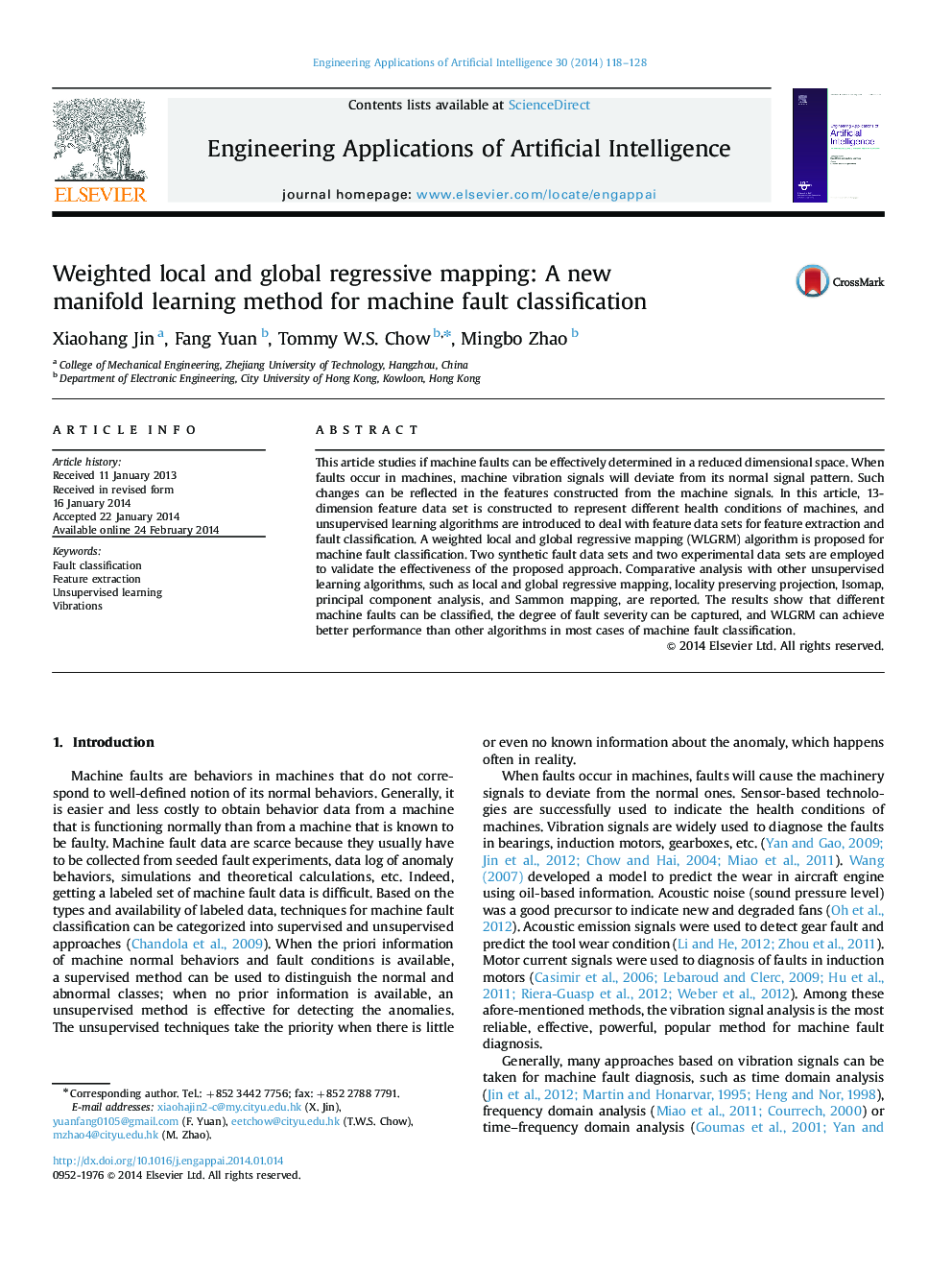| Article ID | Journal | Published Year | Pages | File Type |
|---|---|---|---|---|
| 380618 | Engineering Applications of Artificial Intelligence | 2014 | 11 Pages |
•Unsupervised learning algorithms are extended for machine defects classification.•Some improvements of local and global regressive mapping (LGRM) are made for machine fault diagnosis.•Fault data sets are employed to validate the effectiveness of the proposed scheme.•Different machine defects can be classified successfully.•Degree of machine defect severity can be captured.
This article studies if machine faults can be effectively determined in a reduced dimensional space. When faults occur in machines, machine vibration signals will deviate from its normal signal pattern. Such changes can be reflected in the features constructed from the machine signals. In this article, 13-dimension feature data set is constructed to represent different health conditions of machines, and unsupervised learning algorithms are introduced to deal with feature data sets for feature extraction and fault classification. A weighted local and global regressive mapping (WLGRM) algorithm is proposed for machine fault classification. Two synthetic fault data sets and two experimental data sets are employed to validate the effectiveness of the proposed approach. Comparative analysis with other unsupervised learning algorithms, such as local and global regressive mapping, locality preserving projection, Isomap, principal component analysis, and Sammon mapping, are reported. The results show that different machine faults can be classified, the degree of fault severity can be captured, and WLGRM can achieve better performance than other algorithms in most cases of machine fault classification.
